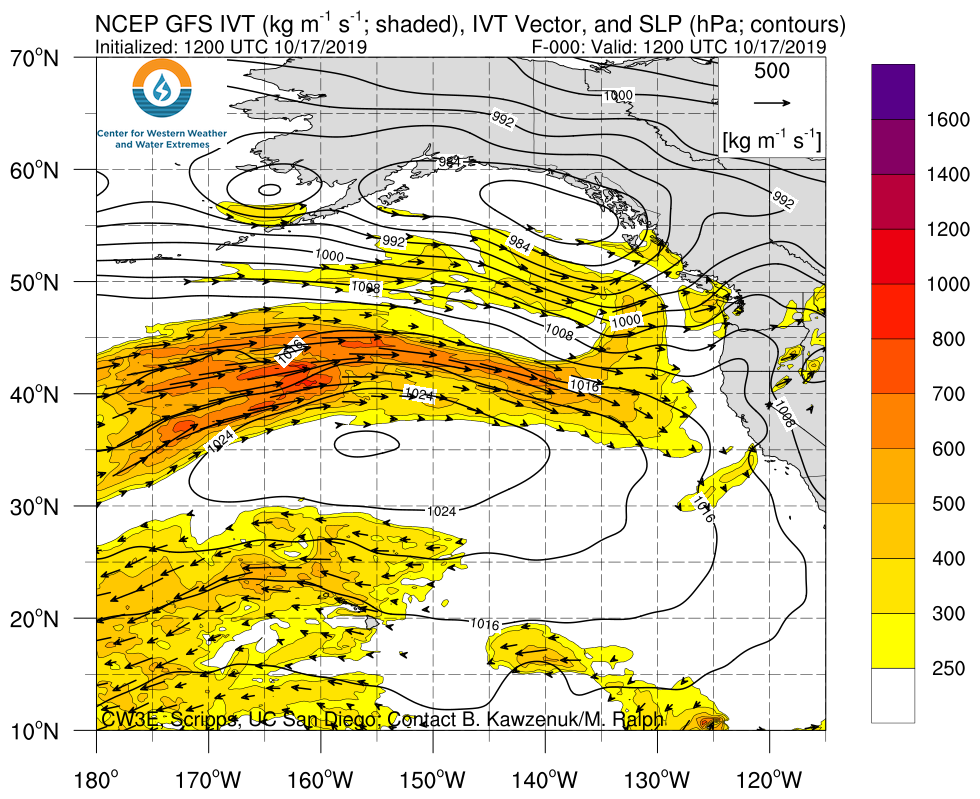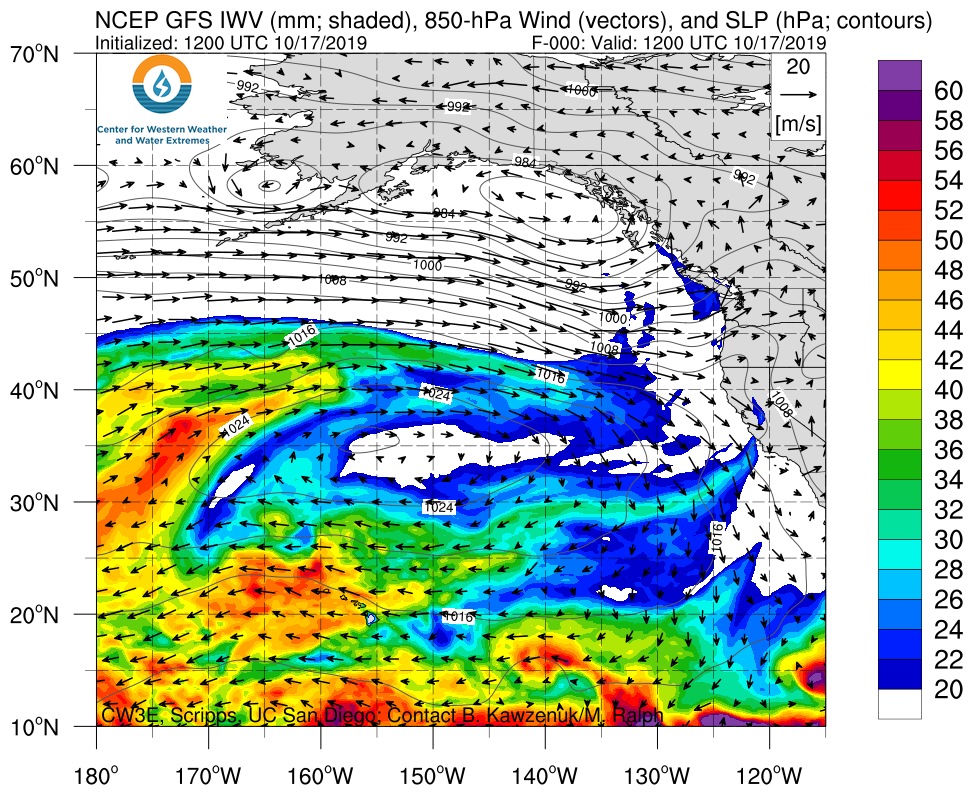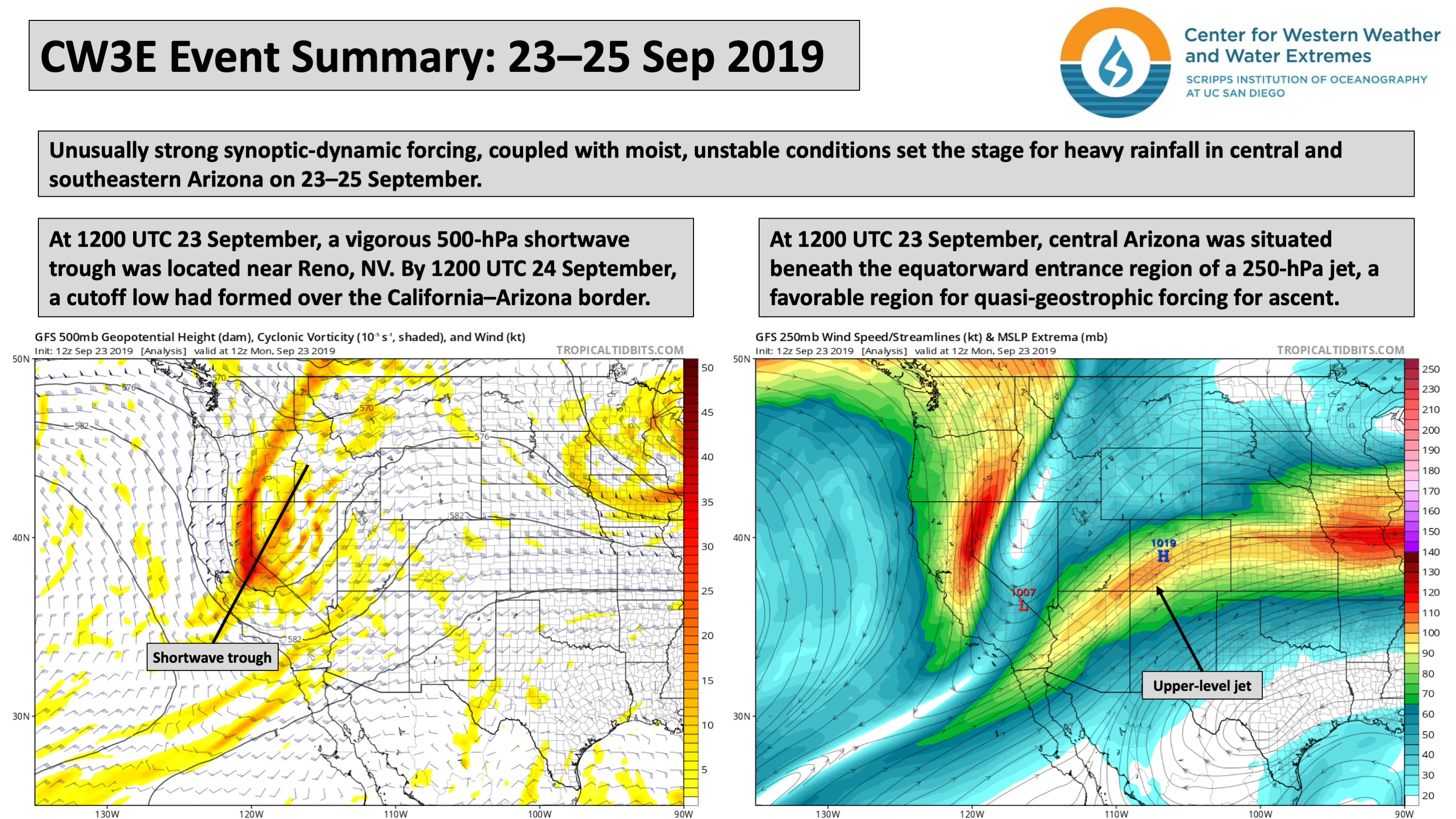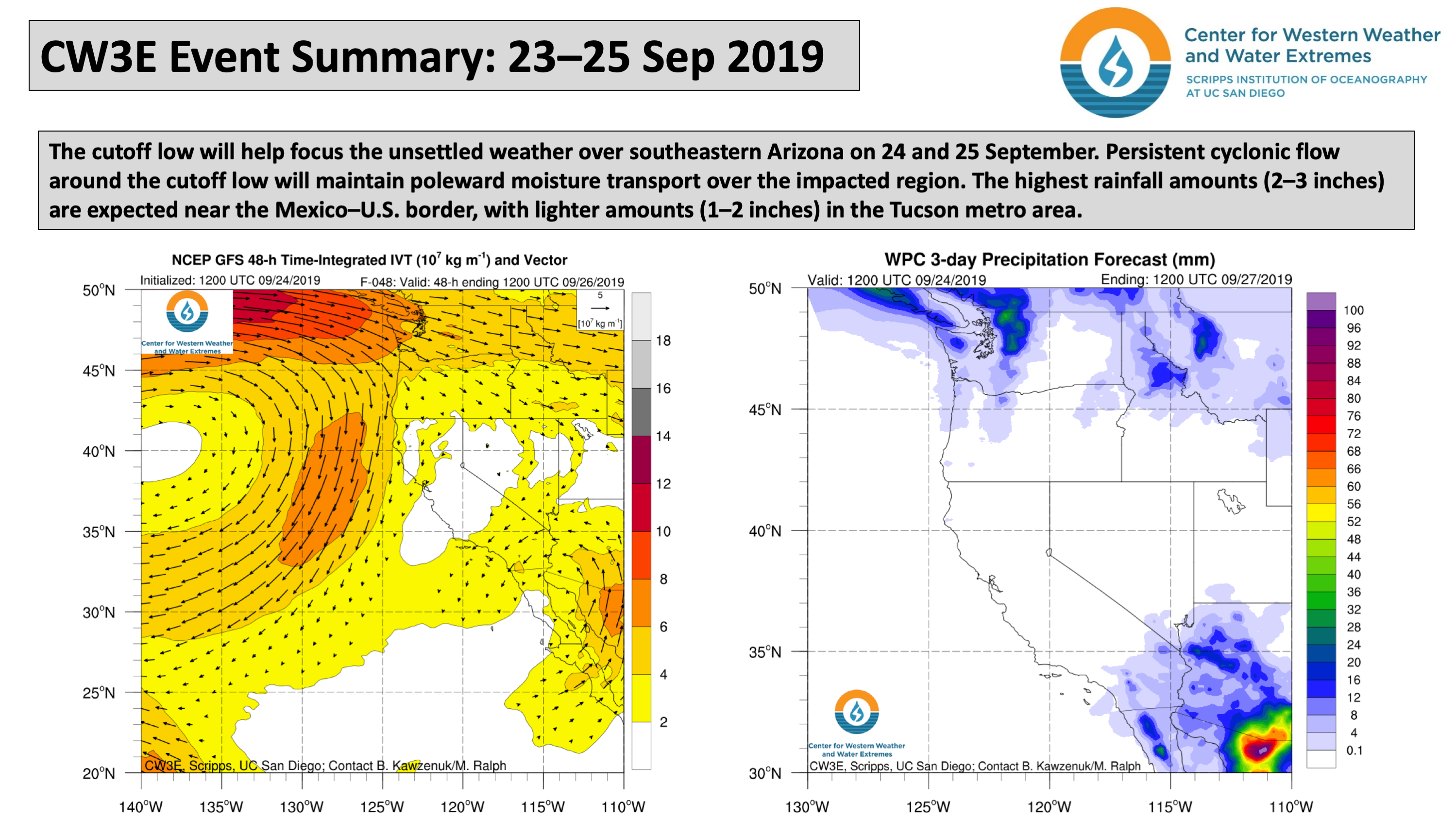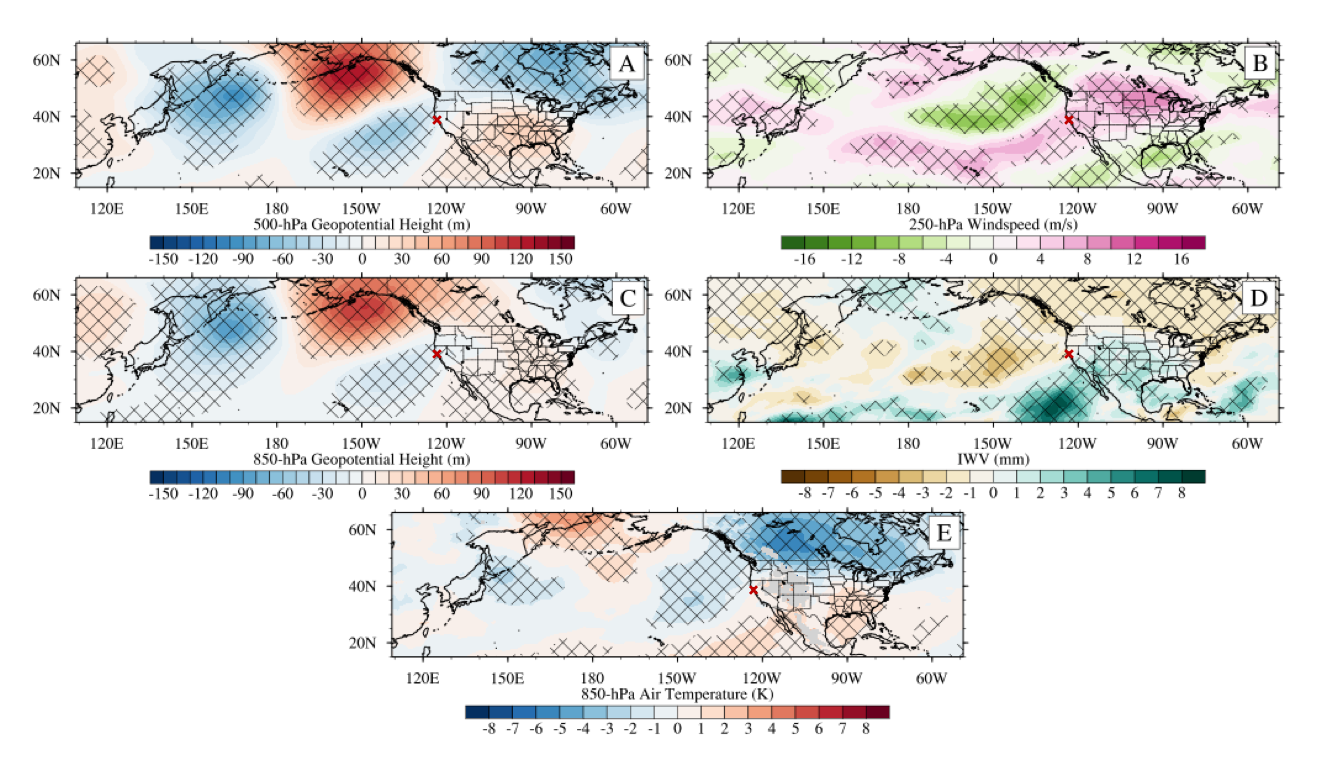CW3E Participates in 3rd ARTMIP Workshop
October 21, 2019
The 3rd Atmospheric River Tracking Method Intercomparison Project (ARTMIP) Workshop was recently held at Lawrence Berkeley National Laboratory (LBNL) in Berkeley, California.
ARTMIP, started in 2017, is a collaborative effort to understand and quantify the uncertainty in atmospheric river (AR) climatology, precipitation, and impacts that arise because of different AR detection/tracking methodologies, and investigate how these AR-related metrics may change in the future. The climatological characteristics of ARs, such as AR frequency, duration, intensity, and seasonality, are all strongly dependent on the method used to identify ARs. Meanwhile, the uncertainty in precipitation attributable to ARs has significant implications for our understanding of how ARs contribute to regional hydroclimate now and in the future. The ARTMIP project also aims to provide guidance regarding the advantages and disadvantages of these different AR detection/tracking methods, and which of these methods are best suited to answer certain scientific questions.
The goals of the 3rd ARTMIP workshop were:
- Presentation of results from recent and ongoing ARTMIP research: Tier 1* and beyond (with a focus on Tier 2*)
- Working discussion of current and future ARTMIP experiments and papers
- Solicitation of expert identification of atmospheric rivers and other weather phenomena for machine learning
(*ARTMIP Tier 1: Participants run their algorithms on a common dataset and adhere to a common format. Act as a baseline for all Tier 2 subtopics. Tier 2: Designed to test sensitivities and dig into topical science questions.)
Several members of CW3E are participating in ARTMIP and attended the 3 rd ARTMIP Workshop in Berkeley, including Allison Michaelis, Christopher Castellano, Cody Poulsen, Michael
DeFlorio, and Zhenhai Zhang. Allison presented her high-resolution simulations using the Model for Prediction Across Scales (MPAS) for use in climate change studies. Allison’s simulations provide an additional dataset to ARTMIP and could be used to examine AR variability based on ENSO, investigate the impacts of increased model resolution (15-km) on the simulation of ARs, and explore the consistency of the climate change signals across modeling frameworks. Zhenhai shared his work on the relationship between ARs and extratropical cyclones in the workshop when the relevant questions were raised. Following his previous work, Zhenhai will investigate the interaction between ARs and cyclones through their life cycles using the AR tracking methods from ARTMIP, as well as explore the uncertainties due to different AR tracking methods.
The main outcome of the workshop will be to produce a workshop report and summary paper describing how detection method uncertainty affects our understanding of ARs – particularly with respect to AR impacts, variability, and trends. The report includes four sections: (1) Introduction to ARTMIP, lead by Christine Shields from NCAR; (2) Ongoing ARTMIP Activities, lead by Jonathan Rutz from NWS; (3) AR Tracking Uncertainty, lead by Ashley Payne from University of Michigan; and (4) ARTMIP Going Forward, lead by Travis O’Brien from LBNL.
For more information on ARTMIP, visit the ARTMIP website.


